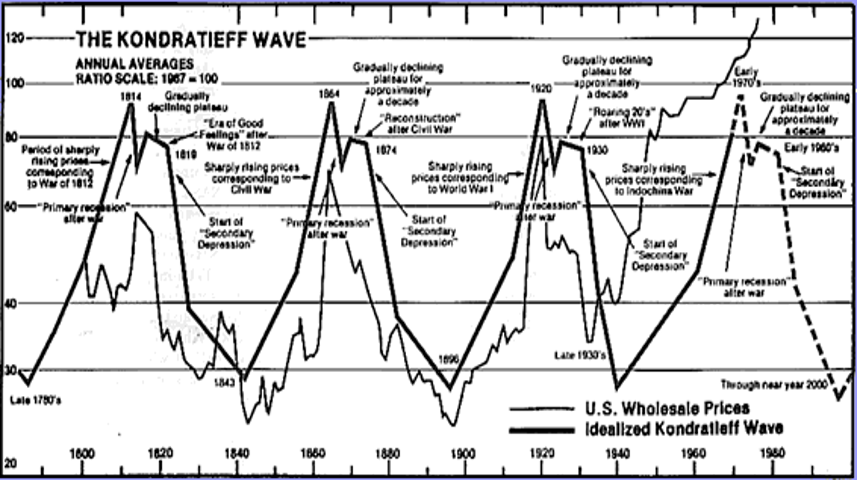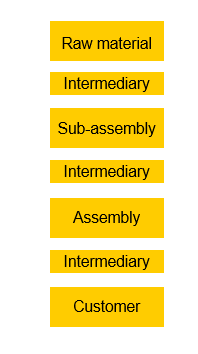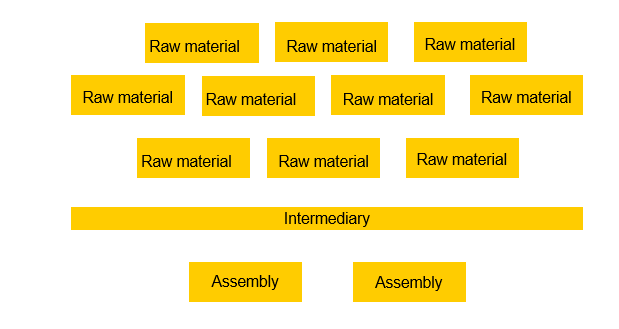lecture 4: technology and economy
cultural studies
technological determinism, social determinism, economic reductionism
technology studies
emphasis on the development of the tools/systems (to produce, store, distribute meaning) rather than on the production of meaning
technological determinism
type 1: technological determinism, faith in progress and utopianism
science and technology changing the world, enabling communication when none had been possible before, storing and retrieving information in increasingly paperless spaces…
stage theories of society: printing (origins modern, industrial society) and ICT (origins post-modern, post-industrial society)
ICT changes society for the better: giving everyone chance to voice opinions, diluting hierarchy and power structures, making markets transparent
change = progress
type 2: media technologies as harful and a threat to society, often children and young people
luddism - sabotage as form protest against the technological progress with textile machinery
way to think of causality that assumes that discrete causes have linear effects
discrete causes (self-contained): ignore that social forces that contribute to development, implementation, adaptation, incorporation of a technology
linear effects: ignores reverse causality and transactional forces
example: early telephony
development: in search new telegraphic system
implementation: cable-radio
adaptation: local interactive communication
incorporation: system for interpersonal comm.
social determinism
technology not determining, but determined by variety of social intentions at each stage o ftechnology development
in radical form, it denies anyy role of technology in social change and grants social institutions and social and pol. elites, absolute power over technology and thus power over society and social change
reductionism
way of thinking about causality in which everything is expression of some essence
economic reductionism: Marxist orthodoxy according to chich technology reflects economic inequalities/power relations
largely dehumanized vision on technological change
an alternative: the social construction of technology
emphasizes need social constructivist approach towards study of science and technology, both scientific and technological artefacts are to be understood as social constructs
social construction of technology without denying that technology to certain extends influences society and social relations
development of technology (and its meaning) as interactive process among technologists and social groups
users as one of relevant social groups who play part in construction of a technology
the social construction of technology (by the media): case of gender
social shaping and advertising
int echnology, advertising can play important role in shaping meaning that social group gives to an artifact
machines and services don’t enter household naked, are packaged by purchaser and user with meaning (dreams, fantasies, hopes, anxieties): imaginaries of modern consumer societies
individual use of technology highly discursive when people use technologies to generate distinctions or to support their identity construction
role advertising: important locus for linking object to particular consumer segment (group os people with common characteristics)
gender and technology
how do material objects acquire gendered meanings?
technology: materializations of social discourse of gender
producers develop and market products bearing in mind values and symbold they see as central to targeted consumer groups ( (un)consciously drawing on assumptions and discourses on gender)
case of the shaver
gender script as analytical category
representations of gender relations and gender identities, that artifact’s designers have and then inscribe into materiality of that artifact
maintaining/reinforcing of prevailing gender definitions
script can’t determine bahviors of consumers, but they surely act invitingly and/or inhibitingly
the domestication of media technologies
cultural studies: centrality of users
users most relevant social gorup in construction of a technology
main point is how users make sense or give meaning to tehcnology
domestication: the concept
at metaphorical level: when users in variety of environments are confronted wiht new technologies; strange/wild technologies have to be house-trained, have to be integrated into the structures, daily routines and values of users and their environments
domestication process (appropriation)
acceptance: how entry of ICTs into personal space is managed
objectification: how these technologies are physically located within personal environment
incorporation: how thes technologies fitted into tome structures and routines
conversion: how we display them to others, and by so doing giving messages about ourselves
appropriation as symbolic process
different social groups can construct different meaning of a technology = interpretative flexibilty
eventually, stabilization of a technology occurs and predominant meaning and use emerge
technological development and use of technology are both responses to societal circumstances, dominant ideologies, and existing power relations
cultural studies vs political economy
both concerned with social shaping of technology
pol. economy entry point is social system, with preference for characteristics of economic system, cultural sutdies puts emphasis on how developers imagine and users make sense of technology
pol. economy: media part of structuration process, are contributing to shaping environment by which they are being shaped. this process taes place in environments articulated in dominance. This doninance is base don economic inequeality at its origins
political economy
information society, post-industrial society…
today the tables are turning
technological determinism
ICT creating revolution in economy, different type society/power relations
rationalisation and expansion
technology not revolutionary role in history, but evolution
mechanisation → telegraphy
automation → telephony
informatisation? → internet
what is information society?
post-industrial society, development in capitalist economy
radical innovation
discontinuous, new economic activity
product innovation → new product
process innovation → new production techniques
system innovation → when it changes sector organisation
technological revolution
introduction new technological paradigm
new ways of doing things that change the way the economic system is working profoundly
innovation change the way society is working
kondratief waves (long wave theory)

period upheaval: new stuff, people buy stuff (technology consumerism)
at some point people have their technology stuff and stop buying it, saturation, but firsm put money into making technology and can’t just take that capital they invested back (stickyness of capital)
= contraction of the economy, downward turn
period bad economy: entrepreneurs/smart people try to find new products, a way out of bad economy period
= new technology, economy gets better
media as industries
profits vs costs
first interest media industries is maximising profits. In first place, companies pursue own interests
fundamental drivers
not just revenue drives capitalist development; under conditions relative competition capacity of firms to increase profit margins is limited. ALternative is search for increased productivity through more efficient deployment of invested capital
investment machinery and pressure on wages → declining purchasing power → economic downturn → crisis (link long wave theory)
fundamental tendencies
one of most significant features of media organisations capitalist era is increasing presence and importance of large corporations in cultural production, monopolies, oligopolies, strategic allignment (divide market into segments, companies take different parts of society to focus on)
neo-classical economics: recapitulation
neo-classical model based on assumption that economic equilibrium is possible in which resources are optimally allocated
to reach equilibrium certain number of conditions needs to be fulfilled
these are conditions under which perfect competition will arise
perfect competition holds that no individual buyer or seller has negligible impact on market price (formal theroetical model, equally powerful competitors)
perfect competition may not be possible because of conditions that need to be fullfilled
industrial economics
material characteristics of the market
neo-classical model of marginalist production si formak theoretical model
industrial economics developed inr eaction to this, investigate real circumstances under which firms operate
it recognises value of marginalist model, but focus more on remediation of market failure
markets
theory, characteristic market —————— reality
buyers and sellers are rational (know theit needs, can distinguish their needs and wants —— bounded rationality (decision makers intendedly rational, goal-oriented and adaptive, but sometimes fail because of human cognition and emotions
buyers and sellers have accurate and complete market information ——- market transparancy is problematic, most markets information asymmetry; information has a cost, well documented strategy is strategic deception
economic actors strive to profit maximisation (fosters innovation, no excess profits; competition will see that only normal profits are earned) ——— profit maximisation: firms should always try to maximise profits
no single player can determine market price or market conditions ——- predatory pricing is pricing strategy firms use to deter other firms from engaging in competition, dumping is another strategy (selling product at price below production cost, or selling it on foreign market at lower price than domestic market)
products are homogenous, substitutable products means opportunity for price and quality comparison ———— to avoid price competition, sellers might use product differentiation strategies so no easy comparison possible, diversification also marketing strategy, it’s attribution of some quality to a product, so it stands out from the pack (different products are offered
production costs are proportionally supported by all consumers (all users equally share in cost of producing the product) ———— costs not always evenly distributed, some markets characterised by positive/negative externalities (example: pollution is negative externality. Buyers and sellers not paying for this cost, but someone else, the tax payer, is.)
market entry and exit is costless so that when markets saturate, firms can easily move to another market ———— costless entry and exit = firms can easily extract their capital from one market in order to invest in other markets. However, firms often have sunk costs (costs that a firm has incurred and can’t be recovered
two basic concepts
economies of scale: reduction in the per unit cost of production of a single as volume of production of that product increases → cost less because you produce more of it
economies of scope: reduction average cost of production when two/more products are produced using the same production facilities → cost goes down because more products in same facilities
network effects
customer lock in: strategy to make customers dependable on type of product by increasing exit costs for customers
network externalities: important in comm. networks and social media. Network externalities means that benefit that user gets from a good changes when number of other users consuming same good changes. In info and comm. networks, amont of connection between users grows exponentially as amount of users grow, and also value of the network (advantage for large players in the market)
vertical integration
supply chain: shows how product goes from raw material to the costumer
value chain: indicate that as product moves along chain, value gets added

transaction costs
comm. cost, contract cost, control cost

conclusion
concentration tendencies
theory of markets doesn’t work in reality
market needs to be constructed
monopolies, oligopolies, strategic alignments, technological lock-in